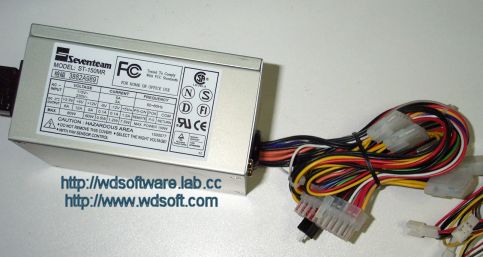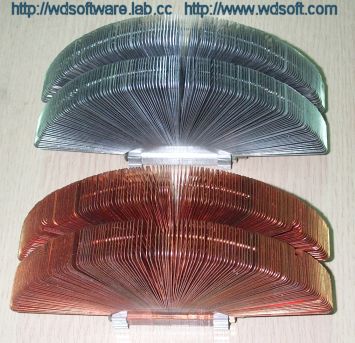Miniature Air Conditioner (2/5)
Posted by Wesley onI certainly wouldn't try the experiment again on my T-bird Athlon in my Portable Athlon unit for two main reasons, and that has to do with the TEC I have in question. Its power rating is 72W. A TEC can only pump heat up to about half of the power rating effectively, meaning the cold side has to have a load of less than 36W. A T-bird easily tops 50W in maximum power consumption, and that's one of the reason why it's not fit for use here. The other reason is that I have 150W power supply unit in the system, and it is already pretty much maxed out. You don't see a T-bird running on a 150W PSU every day anyhow. It has nowhere near the 72W power left to power the TEC.
Therefore, I decided to use the TEC to cool the air itself, in a fashion not so differently from an air conditioner. Thus was born the TEC air conditioning project. The parts I needed now: two massive heatsinks, some fans to blow air over the heatsinks, and a power supply to power both the TEC and the fans. I bought yet another 150W PSU to use for this project as you can see below. I did not want those big, conventional units, and I didn't want a long one like last time. So I got a microATX version. If you see closely, I attached a small switch on the motherboard connector so I could turn it on and off.

As for heatsinks and fan, I needed not look further than Zalman Tech's heatsink laboratory. The people there are quite eager to help me out, so I asked if I could have some heatsinks for the air conditioning project. They told me that I could not use a conventional flower heatsink they make, because the end of the fins does not cover the 40x40(mm) surface area of the TEC fully and would not effectively cool it. They suggested making a modified cooler that would cover all that. Of course, it would need far more fins than usual. Two to three times more, in fact.

In the end, two massive heatsinks resulted, one in copper, one in aluminium. The fins spread out in near half-circle; the copper one has 135 fins, and aluminium, 145. The only downside to this is that the fins are too tightly packed together and might block good airflow. Nevertheless, it seemed good enough for the project, not to mention it's very eye-catching.